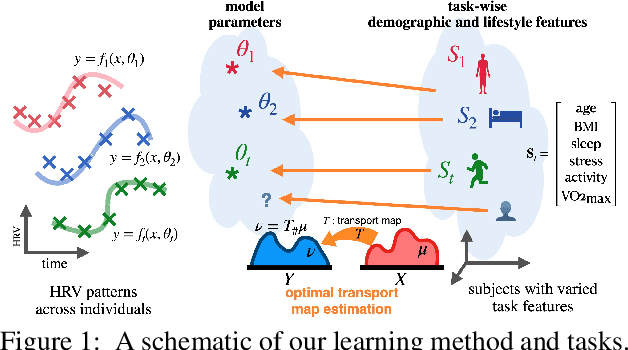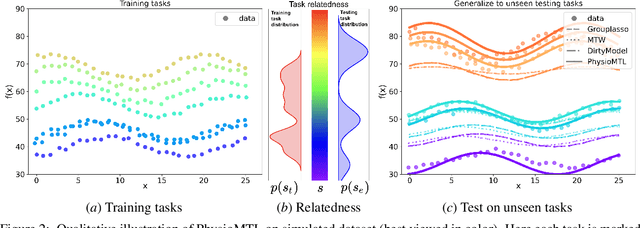Shirley You Ren
Towards Time Series Reasoning with LLMs
Sep 17, 2024Abstract:Multi-modal large language models (MLLMs) have enabled numerous advances in understanding and reasoning in domains like vision, but we have not yet seen this broad success for time-series. Although prior works on time-series MLLMs have shown promising performance in time-series forecasting, very few works show how an LLM could be used for time-series reasoning in natural language. We propose a novel multi-modal time-series LLM approach that learns generalizable information across various domains with powerful zero-shot performance. First, we train a lightweight time-series encoder on top of an LLM to directly extract time-series information. Then, we fine-tune our model with chain-of-thought augmented time-series tasks to encourage the model to generate reasoning paths. We show that our model learns a latent representation that reflects specific time-series features (e.g. slope, frequency), as well as outperforming GPT-4o on a set of zero-shot reasoning tasks on a variety of domains.
PhysioMTL: Personalizing Physiological Patterns using Optimal Transport Multi-Task Regression
Mar 19, 2022



Abstract:Heart rate variability (HRV) is a practical and noninvasive measure of autonomic nervous system activity, which plays an essential role in cardiovascular health. However, using HRV to assess physiology status is challenging. Even in clinical settings, HRV is sensitive to acute stressors such as physical activity, mental stress, hydration, alcohol, and sleep. Wearable devices provide convenient HRV measurements, but the irregularity of measurements and uncaptured stressors can bias conventional analytical methods. To better interpret HRV measurements for downstream healthcare applications, we learn a personalized diurnal rhythm as an accurate physiological indicator for each individual. We develop Physiological Multitask-Learning (PhysioMTL) by harnessing Optimal Transport theory within a Multitask-learning (MTL) framework. The proposed method learns an individual-specific predictive model from heterogeneous observations, and enables estimation of an optimal transport map that yields a push forward operation onto the demographic features for each task. Our model outperforms competing MTL methodologies on unobserved predictive tasks for synthetic and two real-world datasets. Specifically, our method provides remarkable prediction results on unseen held-out subjects given only $20\%$ of the subjects in real-world observational studies. Furthermore, our model enables a counterfactual engine that generates the effect of acute stressors and chronic conditions on HRV rhythms.
 Add to Chrome
Add to Chrome Add to Firefox
Add to Firefox Add to Edge
Add to Edge